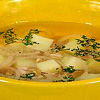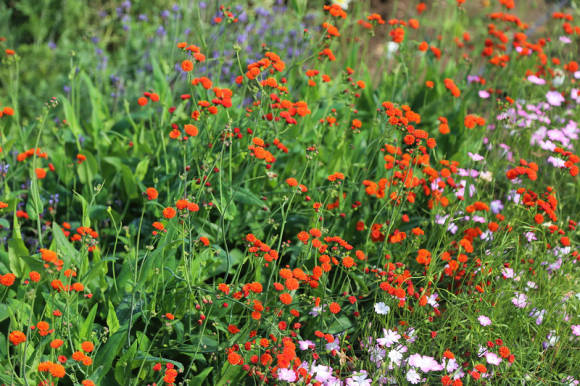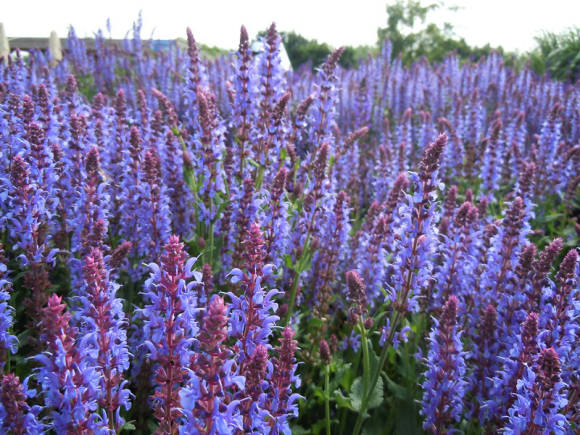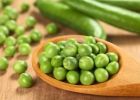
"... As for food, none of the roots is a better food than parsnip", - this is how the famous French scientist and physician of the 11th century, Odo from Mena, wrote about this plant.
Unfortunately, this vegetable, so famous in ancient times and almost forgotten in our years, is rarely found in the Russian vegetable garden, although in terms of the content of nutrients it far surpasses many of our favorite traditional vegetables.
Parsnips, often called white carrots, were widely cultivated in ancient times. In ancient Rome, it was highly valued in nutrition and used for medicinal purposes. In the Middle Ages, it was widely grown in Central Europe for the sake of fleshy and tasty root vegetables, peculiar aroma and spicy taste. And in Russia, as early as 1600, it was grown in vegetable gardens and consumed as a tasty dish. In the famous Izmailovsky vegetable garden of Tsar Alexei Mikhailovich, the areas occupied by parsnips were more than 3 times larger than the areas occupied by carrots. But later, potatoes ousted not only parsnips from the Russian garden, but also the traditional queen of our garden - turnips.
Biological features

Sowing parsnip, or meadow parsnip, is also popularly called the spindle root. According to its biological properties, parsnip sowing (Pastinaca sativa) belongs to the umbrella family (celery) and is very close to carrots, parsley and celery. It has a root vegetable similar to them with white or yellow pulp, the length of which can reach 40 cm, and the weight - up to 800 g. Moreover, this root vegetable replaces both carrots and parsley in soups at once.
Parsnip is a herbaceous plant up to 150 cm high. In the first year of its development, it forms a rosette of large basal leaves, and in the first half of summer they develop slowly and then grow rapidly. The leaves are separately pinnate, glossy above, fleecy below, with long petioles. The rosette of leaves is often erect, strongly developed, and consists of 6–9 leaves.
In the second year of life, flowering stems grow, hollow, ribbed, slightly pubescent, branched at the top. The flowers are yellow or orange, collected in inflorescences, they contain a lot of nectar and are good honey plants.
The root of the parsnip is very powerful, it penetrates to a depth of 1.5 meters or more and is able to absorb moisture from the deep layers of the soil. The root vegetable is juicy, fleshy, yellowish-white, has an elongated-conical (carrot-like) shape or a round-flattened shape and a smooth surface with pronounced lenticels.
Inside, the roots are white or yellowish-cream in color, have a spicy, sweet taste and aroma. The diameter of a rounded root crop reaches 9–10 cm, and the length of an elongated root crop is up to 30 cm or more. Rounded roots are at a depth of 1-1.5 cm, elongated - at a depth of 3-4 cm.
What is especially valuable in parsnips is that it is not afraid of the cold and is the most cold-resistant and frost-resistant of all root crops. Its seedlings tolerate frosts down to minus 5 ° С, and adult plants - up to minus 8 ° С. This frost resistance can be especially appreciated in autumn, when its leaves stand out for their beautiful greenery against the background of frost-killed grass.
Parsnip seeds begin to germinate at 2–3 ° C. They sprout slowly - on the 15-20th day. The optimum temperature for plant growth is 16–20 ° C. Root crops grow until late autumn, and those left under the snow are well preserved in the ground until spring.
Parsnips are less demanding on growing conditions than other root vegetables. It is hygrophilous, but does not tolerate excessive waterlogging of the soil, high groundwater levels, and acidic soils. It is photophilous, especially in the initial period of growth, so one should not be late with thinning and weeding of weeds. In addition, it is practically not damaged by diseases and pests.
Parsnip varieties
Most often, the following varieties can be found on sale:
White stork - mid-season fruitful variety. Root crops are conical, white, smooth, with white and juicy pulp weighing up to 100 g. They are leveled and well stored in winter.

Guernsey - late ripening variety. Root crops are conical in shape, up to 25 cm long, weighing up to 200 g. The pulp is white, sweet, aromatic, of good taste. Keeping quality of root crops is good.
Gladiator - mid-season fruitful variety. Root crops are conical, smooth, with white skin. The pulp is white, fragrant, sugary.
Delicacy - mid-early variety. Root crops are round, up to 8 cm long, weighing 200-350 g. The flesh is white, with yellowish spots. The taste is good, with a strong aroma. Keeping quality of root crops is good.
Round Is the earliest and most productive variety with a growing season of 105–110 days. The root crop is rounded-flattened, sharply tapering towards the base, 10–15 cm long, up to 10 cm in diameter, weighing up to 150 g. The outer color of the root crops is grayish-white, the flesh is white, dense, has a very sharp aroma, mediocre taste.
Chef - medium early variety. The period from full germination to the beginning of technical ripeness is 80-85 days. The rosette of leaves is erect. The root crop is cone-shaped, rounded-flattened at the base, white, the surface is uneven, the head is medium. The root crop is completely submerged in the soil. Root weight 130-160 g.
Best of all - a mid-season parsnip variety with a growing season of 115–120 days. Root vegetable weighing up to 200 g, conical, with an extended upper part and downward slope, 15–20 cm long. The outer color and the color of the pulp is white, has a good aroma. The variety has a high yield and good keeping quality of root crops, easily adapts to various growing conditions.
Petrik - mid-season variety with a growing season of up to 125–130 days. The variety is very productive. Root crops are conical, up to 30 cm long.
Heart - mid-season fruitful variety. Root crops are cone-shaped, white-cream, smooth, weighing up to 100 g, with white flesh, well stored in winter. The variety is resistant to thickening.
Student - a late-ripening variety with a growing season of 150–160 days. Root crop weighing up to 300 g and up to 30 cm long with a gradual downward slope. The surface of the root crop is white, the pulp is clean, dense, white, and fragrant. The variety has a high yield and keeping quality.
Useful properties of parsnips
Recent studies have shown that the healing properties of this vegetable are much more important and multifaceted than the flavoring ones.
In appearance, parsnips are similar to large white carrots with an expanded top of the root crop. In its spicy peculiar taste, it resembles celery or root parsley. This is a delicious and incredibly nutrient-rich vegetable. It is used both fresh and processed. Salads, first and second courses, various side dishes are prepared from it.
Sowing parsnip is rich in mineral salts and carbohydrates. Its value lies mainly in the favorable ratio of minerals. root crops contain up to 14% sugars, up to 2% protein, up to 20 mg /% vitamins C, up to 460 mg /% potassium, 50 mg /% calcium, etc. Parsnips are especially valued for their high content of vitamin B.
In terms of the content of easily digestible carbohydrates, this culture occupies a leading place among root crops. But the special value of parsnips in comparison with other vegetables is due to the high content of essential oils, the presence of which can explain its stimulating effect on the entire human body.
Parsnip stimulates appetite, stimulates the activity of the endocrine glands and metabolism. It strengthens the walls of the capillaries, relieves spasms, has a strong diuretic effect, and promotes the removal of stones and salts. In folk medicine, it has long been used to treat urolithiasis, bronchitis and laryngitis, to restore strength in recovering people, and also as a vasodilator. Parsnip leaves are used in dermatology.
Agricultural technology of cultivation

Parsnip belongs to unpretentious crops that can grow even on inconveniences. But it grows especially well on light loamy and sandy loam soils with good aeration and floodplain soils with a deep arable layer.
It also gives high yields on cultivated peaty soils with a neutral reaction and an even water balance, it does not tolerate waterlogging. Heavy clay soils are unsuitable for him; on them, root crops acquire an ugly shape. Parsnips also do not tolerate acidic soils.
The area for growing parsnips should have good sunlight. Even a slight shading of the plants reduces the yield by 30-40%.
Any culture can be its predecessors. But the best predecessors for it are pumpkin seeds, potatoes, cabbage, cucumber, onions, under which manure was applied 2 years before parsnip was grown.
Soil preparation begins in the fall after harvesting the predecessor. If the arable layer is shallow, the bed is built up with a layer of earth so that the depth of the arable layer is sufficient, and then it is reinforced with boards along the perimeter to the height of the poured layer so that the earth does not crumble.
It is better to apply manure and lime under the previous crop, since the application of fresh manure directly under the parsnip will cause branching of the roots. For the autumn digging, it is also necessary to make 1 sq. meter 1 tbsp. spoon of superphosphate and potassium fertilizers. On heavy soils, a significant amount of peat crumbs and coarse-grained river sand must be applied.
In the spring, the soil is cultivated to a depth of 10-12 cm and nitrogen fertilizers are applied. Then the surface of the site is carefully leveled without leaving large lumps of earth.
Parsnips are propagated by seeds. Its seeds are large, flat, light; retain germination for only 1-2 years, so only seeds of the previous year should be used for sowing. But most importantly, in areas with a shallow arable layer for cultivation, it is necessary to select varieties with a shortened round root crop.
Seeds can be obtained from overwintered plants in the second year. Testes bloom 60-65 days after regrowth. The fruits ripen in early August. They are removed selectively when 75-80% of the umbrellas turn yellow. From one bush, you can get 8-10 g of seeds.
Due to their tightness of germination, parsnip seeds must be prepared for sowing in advance. To do this, you can apply different methods. The simplest of them is to soak the treated seeds in warm water for 24 hours. During this time, the water is changed 2-3 times. The seeds should just swell.
Swollen seeds are immediately sown into moist soil or germinated in the same way as for determining germination. A good effect is obtained by pre-treatment of seeds with the preparation "Epin" (according to the instructions).
And if you do not have time to process the seeds, sow them dry, only they will sprout much later. Prepared parsnip seeds germinate at 11-12 days, and dry seeds only at 22-23 days.
The growing season for parsnips is very long, so experienced gardeners often sow it before winter. With this sowing period, seedlings will appear early in the spring and the yield will be higher than with spring sowing.
But there is one trick here. If in the fall the seeds were sown too early and seedlings appeared before the onset of severe frosts, then root crops will not be obtained, since only testes will grow. Therefore, winter sowing should be carried out in the already frozen soil in pre-prepared furrows, while using dry seeds, not soaked ones.
Well, if you decide to grow parsnips in a non-seedling way, then spring sowing should be done as early as possible - in late April or early May.
Sowing parsnip develops a large leaf mass, therefore, more rarefied schemes are used for its crops than for other root crops. The row spacing should be at least 30-35 cm.When sowing, seeds are placed in the furrows every 3 cm, embedding them into the soil to a depth of 1.5-2 cm, and on light soils - after 2.5-3 cm.With 2-4-row belt sowing, the distance between the lines is 25 cm, and between the belts - after 45-50 cm.
Since its seeds do not germinate for a long time, their crops can be compacted with the seeds of lettuce or mustard leaf, spreading the seeds of these crops between the seeds of parsnips. By the time the parsnips emerge, these crops have already marked the rows, and it will be possible to loosen and water. Immediately after sowing the seeds, the bed must be covered with foil until the first shoots appear.
Quite often, parsnips are sown in early spring along the edges of beds with other crops, along berry bushes and even along paths.
Caring for the crops of this culture consists in thinning seedlings, loosening the soil and weeding, fertilizing and watering. As soon as the shoots of parsnips appear (or even better - the shoots of the lighthouse culture: lettuce, spinach, radish), it is necessary to water and loosen the soil. The first thinning is carried out at the stage of 2-3 true leaves, leaving the plants after 5-6 cm, the second - at a distance of 10-12 cm when 5-6 leaves appear.
If you decide to grow this vegetable in a seedling way, then you must remember that it does not tolerate transplanting well, so it is better to grow seedlings in separate pots. Seedlings are planted in open ground at the age of 25-30 days, while being careful not to damage the root system.
Parsnip is a moisture-loving plant, over the summer it must be watered 5-6 times, 10-15 liters of water per 1 sq. meter, in no case allowing the soil to dry out. He especially needs watering in early - mid-July. After watering, the soil must be loosened, making light hilling of the plants.
Parsnips, forming a powerful rosette of leaves, carry out a lot of nutrients from the soil, therefore, a month after the emergence of seedlings, the plants must be fed with full mineral fertilizer. Top dressing with infusion of mullein (1: 10) or bird droppings (1:15) in the phase of full development of the rosette of leaves is very effective. Parsnip plants react very well to feeding with complex micronutrient fertilizers.
This wonderful vegetable has a very unpleasant characteristic: its moist leaves cause burns on the skin; therefore, it is not recommended to thin seedlings and loosening the soil in the aisles through dew or after rain without gloves and stockings.
The fact is that parsnip leaves contain essential oils that protect plants from pests, and it is these essential oils that cause burns and blisters on open areas of the body, especially in hot weather and after rain. Therefore, it is advisable to work with parsnips in cloudy weather, when the heat subsides, avoiding direct contact with the plants, otherwise you can get hives.
Harvesting and storage of crops
Parsnips are well stored in the basement in winter and winters safely in the garden. They are harvested, like carrots, at the latest dates before severe frosts, i.e. before the soil freezes; dug out with a pitchfork very carefully, since damaged roots are poorly stored.
The tops are cut, like carrots, and the soil adhering to the root crops is carefully cleaned. In rainy weather, when the soil is saturated with moisture, parsnips cannot be harvested.
Root crops left in the ground for spring consumption should be additionally covered with snow, peat, straw, and coniferous spruce branches in a harsh winter. In early spring, they are dug out of the ground until young leaves appear. If this is not done, then it will bloom quickly and the consumer qualities of the root crop are significantly reduced.
For storage, parsnips are placed in basements in boxes or on racks, sprinkled with slightly damp sand and kept at a temperature of 0-1 ° C and a relative humidity of 90-95%.
Based on materials from the newspaper "Ural Gardener"









